Research Domains
Characterization & Management of Natural Resources
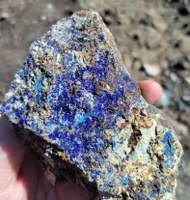 Geological Resources
Geological Resources
Daily-use items like cell phones and solar panels contain non-renewable resources such as rare-earth metals or minerals that need to be extracted responsibly. By prospecting and characterizing these geological resources (through petrography, mineralogy, and geochemistry of supergene ores) and integrating human use over centuries, from antiquity to the electronic age today, ILEE makes a first step toward improving their sustainable management.
Biological Resources
The conservation of endangered species (e.g., salmon and eel) is the goal of aquatic ecosystem management and restoration. Ideal conditions for fish sperm cryopreservation for restocking programmes are determined, or the impact of hydropower plants on fish population is studied. Ecological indicators such as diatoms and macroinvertebrates are used to assess the quality of surface water.
 Sustainable Animal Production
Sustainable Animal Production
Research in aquaculture focuses on the sensible productivity of cultivated freshwater species. An emphasis is placed on the application of immune-stimulation techniques to find alternatives to the use of antibiotics and chemicals, on the substitution of fish meal and fish oil with plant-based substances, and on the improvement of animal husbandry to promote fish welfare. Both temperate (Eurasian perch, pikeperch, and trout) and tropical (striped catfish, African catfish, and tilapia) species are studied.
Photo credits: Julien Poot & Sébastien Baekelandt
→ Publications → Projects
Interactions of Humans & the Environment
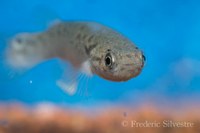 Pollution and Environmental Toxicology
Pollution and Environmental Toxicology
Multiple stressors (chemical, physical or pathogenic stress) and/or pollutants (pesticides, pharmaceuticals, microplastics, endocrine disruptors, neurotoxins, atmospheric residues) impact on individuals but also on ecosystems. Research at ILEE spans from single molecules (e.g., gas composition analysis) over organisms (responses of physiological, immune, nervous, or reproductive systems) to ecosystem functioning.
Specialised instruments for molecular spectroscopy are developed and provide technological innovations. Aquatic organisms (fish, crustaceans and amphibians) serve as bioindicators under natural or experimental conditions to study immune and organismic phenotype responses (assessed at the gene expression level). Conceptual studies resulting from mathematical models are combined with specific case studies based on experiments with plankton in microcosms.
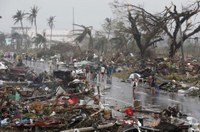 Environmental Impacts on Human Populations
Environmental Impacts on Human Populations
Droughts, land use, environmental and health risks all have an impact on the distribution and migration of human populations. Different vulnerability groups react differently to different hazards. Spatial scales and geographical settings (e.g., Burkina Faso, Senegal, Ecuador, Philippines) further influence population dynamics but also disease risks. It's crucial to comprehend and measure these dynamics for epidemic control, economic planning, and disaster response.
Our research focusses on the interaction between environment and migration at the household or individual level, as well as the interactions between the various agents (humans, vectors, animal hosts and the environment) responsible for the transmission of vector-borne and zoonotic diseases. At ILEE, we employ innovative methods (resilience indicators, game, focus groups, census, etc.) to capture the high complexity and integrated approaches to spatial issues in epidemiology.
Photo credits: Frédéric Silvestre & Erik de Castro/Reuters
→ Publications → Projects
Biodiversity & Evolutionary Adaptation
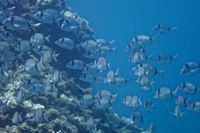 Biodiversity & Adaptation
Biodiversity & Adaptation
Organisms evolve and adapt to changing environmental conditions, which today are frequently caused by human activities. The basis for evolutionary adaptation is the genetic, physiological, and behavioural variation seen in individuals and species, with consequences for community composition and biodiversity as well as ecosystem functioning at different spatial scales.
To address these fundamental questions, we combine ecological theory with models, field data, and experimental setups. We also focus on a mechanistic understanding of biological processes using physiological, behavioural, proteomic and epigenetic indicators. Evolutionary processes, including sexual and asexual reproduction are investigated at the population level (experimental and natural ones).
Biodiversity in the Past
Fossils are the preserved remains of organisms from the Past. They represent evidence for Darwinian evolution on Earth. ILEE studies the age and causes of extinction events of mammals and dinosaurs. We focus our research on massive extinction events related to worldwide warming in order to unravel the potential changes of biodiversity during future climate perturbations.
 Ecosystem services - ES
Ecosystem services - ES
The concept of ES stems from a strong sustainability framework, and its first goal was to support biodiversity preservation. It is now increasingly used to promote sustainable landscape management and planning, to improve the well-being of local actors.
To achieve this, inclusive, integrated valuation frameworks are developed. These frameworks combine different types of values (social, economic, biophysical), and include local stakeholders in a participatory way. The social valuation of ES is a key focus at ILEE, including the assessment of trade-offs and synergies between ES and actors to improve local ES governance.
Methodological approaches include ES mapping, modelling, and integrated ES assessments.
Photo credit: Frédéric Silvestre
→ Publications → Projects
Environmental History
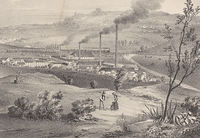 Urbanisation and industrial revolution probably had the most severe impacts on nature in history.
Urbanisation and industrial revolution probably had the most severe impacts on nature in history.
The focus of environmental history studies lies on the perception of human impacts on urban and rural areas through urbanization, industrial exploitation and pollution between the 18th and the 20th century. Further emphasis is put on the pollution of rivers and the relationships between men and animals. Research on socio-historical aspects relate to the history of the local products (“produits du terroir”). The geographic scope is Belgium / Europe but also the South (Democratic Republic of the Congo, Philippines).
→ Publications → Projects
Collaboration with the Global South
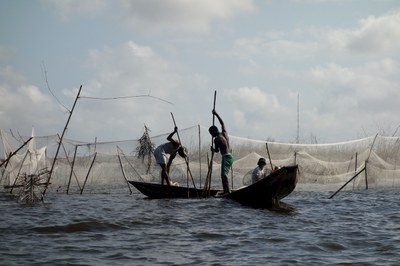 Research focus is put on the following topics:
Research focus is put on the following topics:
- Characterization and sustainable management of natural resources
- Production of aquatic ecosystems and the sustainable development of aquaculture
- Impact of environmental changes on human populations
- Environmental history (natural disasters such as earthquakes and volcanic eruptions)
Photo: pixabay
 Institute of Life, Earth and Environment
Institute of Life, Earth and Environment

